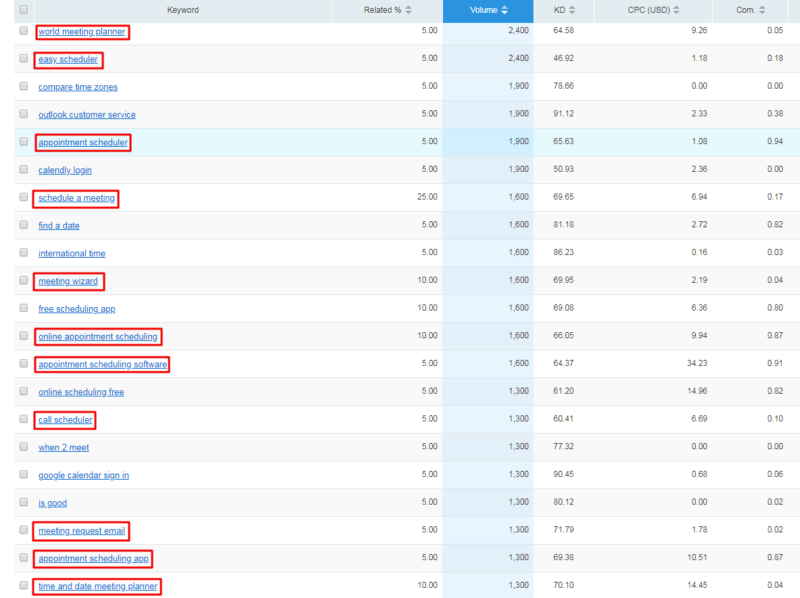 Content and links are still pillars of search engine optimization (SEO).
Content and links are still pillars of search engine optimization (SEO).
In fact, Google has told us in the past these components are two of the top three factors in Google’s search algorithm.
By now, we should all know this, but many people are still making a critical mistake when it comes to content and links and how they relate to each other in terms of search optimization.
The majority of webmasters brainstorm, design and execute content initiatives, then pursue links. I feel this may not be the best strategy. Link building should be a consideration before content is published and should be used to guide content strategy.
When search opportunity dictates content strategy rather than the other way around, the results can be tremendous. When you can consult on content strategy before linking begins, the results can be positive:

As you can see, we had success securing links and expanding keyword rankings, and because the content was targeted and strategic, it only took a handful of links to see growth.
Here is a breakdown of where those keywords land within the top 100 search results:

Now you might be thinking, “Two keywords in the top 10 — that’s not very impressive,” but these keyword rankings are high-value terms that drive qualified traffic with a strong chance of conversion to a site.
Because we had influence over content strategy from the start, we steered the client toward tactical content that would support these results.
It should be noted that content marketing has multiple purposes; not every post should have links as the end goal. Many content marketing campaigns are brand-driven and have nothing to do with SEO and links.
However, if you’re building SEO content, there are three main goals you should consider:
- Overall organic traffic.
- Links.
- Targeted traffic to specific pages.
Let’s walk through a simplified, three-step version of the content consultation process you can use to find ranking and linking success.
1. Identify search opportunities
SEO content consultations start where all content campaigns should start — with keyword research.
For this hypothetical example, I’ll be executing light keyword research, but you’ll want to go deeper with your own research as you build out your content strategy.
My goal is to identify baseline keywords and themes where improvement is achievable. Once I find these base terms, I’ll target them by creating blog posts and pages focused on the long-tail keywords associated with that corresponding theme.
To explain this concept, I’m going to use and analyze the website x.ai, an artificial intelligence-powered personal assistant, and walk through it as if I am consulting with this company on SEO content.

I picked x.ai at random and because the company named its artificial intelligence program “Andrew,” which is a great name, don’t you think?
I start my research by analyzing how x.ai is currently performing. You can use tools like SEMrush or Ahrefs to look for relevant baseline keywords.
Examining the data, I can pull out a handful of key terms that will give me an idea of how x.ai is currently performing:
- [personal assistant] — Rank: 29; Volume: 22,200.
- [meeting scheduler] — Rank: 12; Volume: 6,600.
- [ai assistant] — Rank: 3; Volume: 2,400.
- [personal assistant app] — Rank: 42; Volume: 1,600.
- [virtual personal assistant] — Rank: 51; Volume: 1,600
- [scheduling assistant] — Rank: 11; Volume: 1,300.
I quickly notice that x.ai is ranking for the main term, “meeting scheduler,” so I want to investigate more.
Digging deeper into this keyword phrase, I find there are a number of related long-tail keywords that x.ai could target as well:

Individually, these search volumes aren’t massive, but in aggregate they could make a significant difference for x.ai in terms of relevant traffic if they start ranking for a handful of these terms.
But is there an opportunity for x.ai to rank? To find out, I’ll need to analyze the competing pages in these respective search engine result pages (SERPs).
2. Analyze competing pages
After finding potential opportunities, I need to understand what’s driving success in those spaces, which involves examining competitor pages.
Since I’m brainstorming content ideas, I want to analyze the pages that are ranking for my key terms, rather than analyze entire sites or brands.
For example, one important term I’ve identified that’s related to “meeting scheduler” and x.ai’s business is the term, “meeting request email.”
Here’s what I see when I go to the search results:
 I notice immediately that there is a featured snippet, which means if I optimize my content properly and reach page 1, I should be able to leapfrog the other results by securing the snippet.
I notice immediately that there is a featured snippet, which means if I optimize my content properly and reach page 1, I should be able to leapfrog the other results by securing the snippet.
This snippet is a brief two-point bullet list, but I would expect that an actual email template might be more helpful for users here.
An approach that aims to secure a spot in the snippet might be the best way to improve performance since the top three results here are authoritative sites that could be difficult to unseat from the top ranks.
However, looking at the rest of the SERPs reveals more insight:
 I notice another interesting SERP feature: images in the middle of the results. This further reinforces my belief that an image of an email template could be useful.
I notice another interesting SERP feature: images in the middle of the results. This further reinforces my belief that an image of an email template could be useful.
Clicking on some of the results, I quickly realize I could create better content…
 … if nothing else, at least from a purely aesthetic standpoint:
… if nothing else, at least from a purely aesthetic standpoint:

Researching the actual search results tells me what searchers are looking for and what type of content to create: informational content with helpful examples and usable templates.
This information provides me with direction for a potential new webpage, but before I consult with my content team, I want to know if x.ai could be competitive in this search engine results page.
The best way to measure SERP competition is through links. To analyze links, I’ll use a backlink explorer like Majestic so I can analyze the results in terms of referring (linking) domains.
As mentioned before (Images 5 and 6), the SERPs are top-heavy with authoritative sites; however, I think I can compete with the lower-position pages:
- letters.sampleinvitationletter.info/meeting-request-email Root: 1,133.
- sample-resignation-letters.com/writing-a-business-meeting-request-letter-with-sample.html Root: 518.
- newoldstamp.com/blog/examples-of-a-good-invitation-letter-for-an-important-business-meeting Root: 692.
The numbers being reported for these three pages suggest link competition is actually fairly low for this SERP. Given x.ai’s own authority, it could have a real chance to build a page that ranks well.
 Furthermore, the higher-authority pages, like The Muse in Image 5, have a fair number of inbound links pointing to them. This means my page will have built-in link prospects, as these referring domains might also be interested in linking to my content.
Furthermore, the higher-authority pages, like The Muse in Image 5, have a fair number of inbound links pointing to them. This means my page will have built-in link prospects, as these referring domains might also be interested in linking to my content.
3. Execute content creation
Now, the goal becomes building something that is best in class and optimized for searcher intent.
I would advise x.ai’s content team to build a page that thoroughly explains how to write a meeting request email, complete with example emails and downloadable templates. Potential link partners could easily link to these downloadables or embed them on their site.
I would also track the performance of this page in terms of links and keyword rankings to gauge SEO impact over the following months. Even with sufficient planning, factors such as changes in search behavior and market shifts can pop up and cause a pivot in strategy, so keep an eye on trends.
It is also a good idea to keep an eye on internal linking strategies as new pages are developed and strategy shifts. Some internal links may need to be added or removed.
I now have a strategic content idea that would serve user intent for a relevant term. This primes my link campaign from the start, as I know if I do my job and secure worthwhile links, this page should rank and bring in relevant traffic.
Repeat this process a few times, and you can start to see how growth is achieved.
Scaling SEO content consultation
The hypothetical example I’ve provided discusses the creation of just one specific page. However, this example outlines a scalable model that can be used again and again to build strategic pages.
To review, this process:
- Identified search opportunities by examining current site performance and finding opportunities where improvement is achievable.
- Analyzed competing pages by researching target search results and analyzing ranking content.
- Identified common themes and styling while checking for competitive links.
- Researched target search results.
- Developed better content than the content currently ranking.
- Reviewed content intent and “linkability” factors.
- Track content performance.
- Tweak content when necessary.
This simple three-step process provides an easy-to-follow framework. As you implement this strategy to build out new pages, keep in mind:
- This strategy works best with top-funnel content but can also apply to some types of mid-funnel content.
- Be mindful of internal linking. New pages should link to important product or category pages as a way to direct people and boost link equity.
- Have clear goals in mind, and set proper expectations regarding SEO content. Each new page is a piece of a larger strategy.
By no means should SEOs dictate your entire content strategy. Content serves numerous purposes beyond SEO, such as branding, reputation management and messaging. But if you want to build content that drives SEO results, you need to involve an SEO in your content strategy.
The post How using search opportunities can guide link-building content strategies appeared first on Search Engine Land.
No comments:
Post a Comment